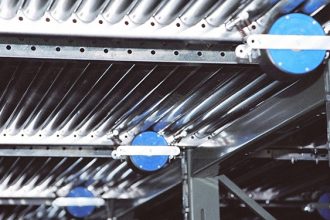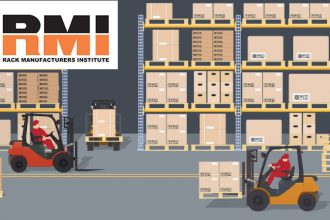Safeguard Personnel On An Industrial Work Platform With Protective Guarding, Part 2

Whether it’s called an industrial work platform, mezzanine, pick module, or rack supported platform, an additional level (or multiple levels) increases an operation’s usable space. It can also, however, increase an employee’s risk of injury due to a fall. Fortunately, there are multiple protective guarding solutions — and requirements for their use — available to shield associates from danger. The previous post examined protection for the outer perimeter of an elevated structure and for stairs and ladders used to access its levels. This post explores ways to safeguard personnel on an industrial work platform with protective guarding for crossovers, restricted areas, and underneath the structure.
Industrial Work Platform Guarding Standards
First, operations that either have — or are considering the addition of — an industrial work platform need to understand that the structure’s construction falls under the International Building Code (IBC), explained Chris Pahls, NexCaliber Structures Product Manager at Steel King Industries. The company is a member of three MHI Industry Groups: the Rack Manufacturers Institute’s (RMI), the Protective Guarding Manufacturers Association (ProGMA), and the Storage Manufacturers Association (SMA).
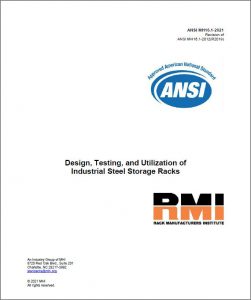 “The IBC references ANSI MH16.1: Specification for the Design, Testing and Utilization of Industrial Steel Storage Racks as the standard for the safe design and installation of steel storage racks. This also includes industrial work platforms,” he said. “Additionally, platform designers should refer to ANSI MH32.1: Stairs, Ladders, and Open-Edge Guards for Use with Material Handling Structures, which is also part of the IBC.”
“The IBC references ANSI MH16.1: Specification for the Design, Testing and Utilization of Industrial Steel Storage Racks as the standard for the safe design and installation of steel storage racks. This also includes industrial work platforms,” he said. “Additionally, platform designers should refer to ANSI MH32.1: Stairs, Ladders, and Open-Edge Guards for Use with Material Handling Structures, which is also part of the IBC.”
Protect Personnel Using Crossovers on an Industrial Work Platform
Facilities use industrial work platforms for a broad range of purposes. Some store excess inventory there, others have active picking zones and fill orders on upper levels. Often, material handling equipment, such as conveyors, run across these elevated platforms. In instances where a long run of conveyor or other equipment bisects an upper level in a way that prevents access to the other side, the platform designer will specify one or more crossovers.
“A crossover is similar to a small bridge,” explained Pahls. “Steps on each side of the conveyor connect to a horizontal landing that spans the width of the equipment.”
A crossover’s stairway and landing must meet the design requirements of MH32.1 with regard to their width, depth, load bearing capacity, and other factors. “They also require a minimum 42-inch-tall guardrail on either side,” he continued. “In situations where crossovers are located near the platform’s edge, it is recommended to increase the platform guardrail to an appropriate height. This offers additional protection should an associate lose their balance.”
Restrict Access to Dangerous Equipment, Falls with Guarding
Using gates throughout an industrial work platform allows a facility operator to restrict access to certain areas, Pahls noted.

“There are several areas within a platform that need to be accessible to certain employees, but not to everyone,” he said. “For example, a lockable gate that only maintenance personnel can open to access machinery or equipment behind it. When equipped with steel mesh, these gates prevent employees from reaching through the barrier and coming into contact with pinch points or other moving equipment.”
Further, Pahls added, in pick modules or other elevated platforms used for order fulfillment, forklifts at ground level deliver pallets of product to openings around the outer perimeter of each level. The open ledges pose the potential for an employee to fall through them.
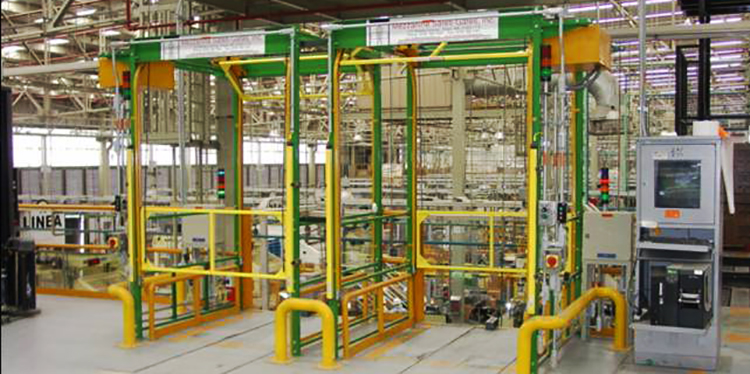
“To protect those areas, there are a variety of different styles of gates available,” said Pahls. “One solution is to install a dual-gate or double-hung safety gate barrier at each opening.”
These gates have a barrier both at the ledge and at the pick face of the pallet. Because they’re interconnected, when one gate opens the other closes. That ensures that associates cannot enter an empty pallet position until after a forklift places a new load. It also reduces the risk of a fall should an employee step between the pallet and the ledge.
Alternately, if an industrial work platform’s owner elects to not install gates at these openings, the Occupational Health and Safety Administration (OSHA) has specific requirements for the usage of personal fall protection systems. OSHA Standard Number 1910.140 mandates use of body harness systems with lanyards and connectors. These protective devices must be tied off at a point within the structure that can support at least 5,000 pounds of force in the event of a fall.
Safeguard Associates from Automated Solutions Used at Heights
As more operations deploy autonomous mobile robots (AMRs), automatic guided vehicles (AGVs), and shuttle-based automated storage and retrieval systems (AS/RS), they should also assess their protective guarding, Pahls continued.
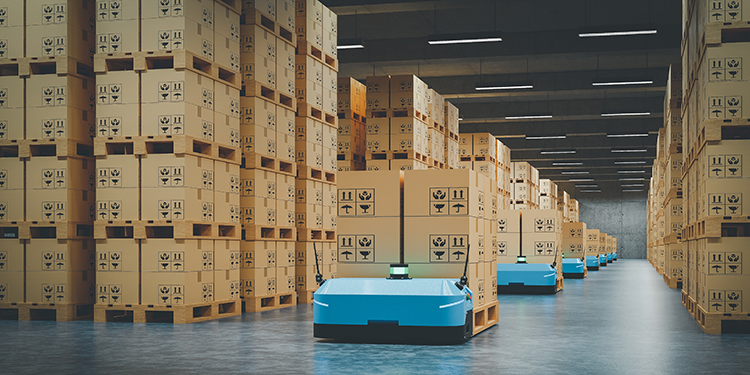
“For AMRs and AGVs, the typical guarding solution for the perimeter of an industrial work platform — vertical posts with a horizontal top rail, one or more intermediate rails, and a kick plate — isn’t adequate. Depending on the type of mobile robot and its payload, if an item falls off it could possibly drop through the open spaces in the guardrail,” he explained.
To prevent that, companies are opting to add 2 x 2-inch wire mesh to existing guardrail. Or they’re installing taller panels made of wire mesh. Both solutions contain falling products better than typical cross rail guarding.
Likewise, operations utilizing shuttle-based AS/RS can also elect to install 2 x 2-inch wire mesh around the open perimeter of some of these systems.
“The levels in a shuttle AS/RS are often just 30 inches apart,” said Pahls. “The open sides of the system can be enclosed with solid or wire mesh panels. Regardless of the type of automation used, consult with the supplier for protective guarding recommendations.”
Shield an Industrial Work Platform’s Support Posts or Columns
Don’t limit the addition of protective guarding on an industrial work platform exclusively to the upper levels, cautioned Pahls. It’s also important to utilize guarding underneath it.
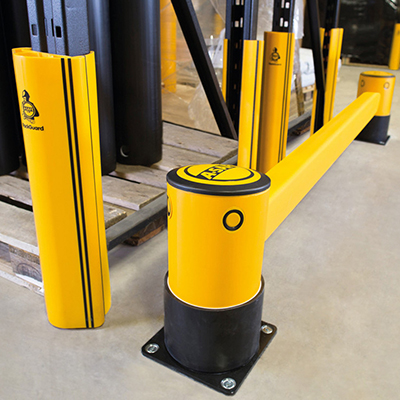
“There are a variety of protective guarding solutions that shield the support columns or rack uprights from impacts,” he said. “That includes barriers at ground level around the posts. Options include floor-mounted bollards or steel, foam, or plastic guards that encircle each upright. It’s also important to separate forklift and employee traffic by installing pedestrian guardrails.”
Other protective guarding solutions include height restrictors positioned at the vehicle entrances under an industrial work platform. Their construction prevents a vehicle from contacting the structure’s posts or platform. Likewise, alarm or clatter bars suspended overhead generate noise when struck, prompting the operator to redirect the vehicle.
Have Other Questions About Industrial Work Platform Safety?
Connect with the members of the Rack Manufacturers Institute’s (RMI), the Protective Guarding Manufacturers Association (ProGMA), or the Storage Manufacturers Association (SMA).

